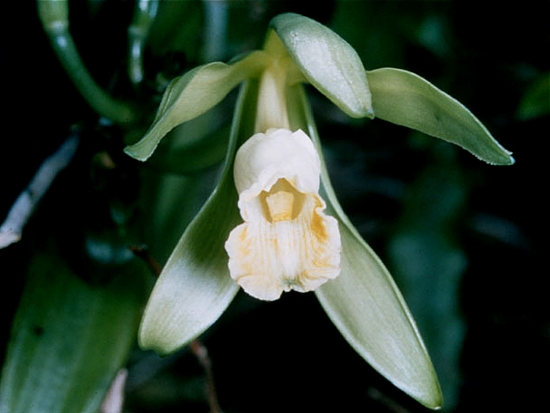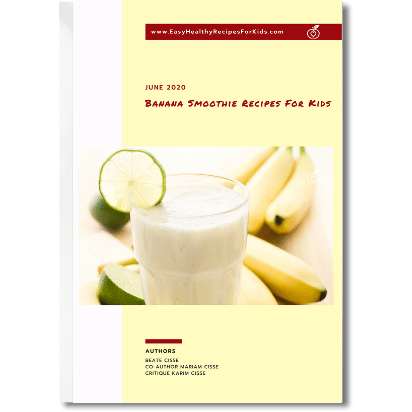From Vanilla Orchid To Vanilla Bean
Mexico is the country of origin for the vanilla orchid called Vanilla planifolia. There in the present state of Veracruz the orchid has been cultivated since the 15th century. Since then many places mainly around the equator started to cultivate the orchid. This orchid loves tropical conditions. The orchids require a tree for them to attach their vines too. Once they have found a tree they will climb to the top of it. If it is a high tree this can proof to be difficult for their growers to retrieve. For this reason growers carefully lift the top ends of the vines and redirect them downwards. The limited height the plants reach then directly has a positive influence on an increased number of blossoms and the plants are easier to manage.
Please know we love feedback so either drop "Easy Healthy Recipes For Kids" a line via the Contact Us page.
Comment or review here your experiences and successes with the recipe. Or even share your favorite recipe.

The first vanilla orchid plants that were grown outside Mexico didn’t show any orchid fruits. The vanilla pods only ripen on pollinated blossoms. This was done in Mexico by a small native stingless bee called Melipona bee. The way to go for today’s main vanilla producing countries is pollination by hand. This task is quite laborious and becomes even more labour intensive by the fact that the orchid only blooms for one day per year and then only for a morning.
Vanilla orchid life cycle
After pollination it takes another six months for the pod to ripen. Pods
that show a pale yellow coloration at the distal end are ready for
harvest. Again this is a labor intensive process. Each fruit ripens in
its own time and over ripeness reduces its value.
The fruit still
needs a lot of care until it reaches the market. The process is called
curing and consists of killing, then sweating, then slow-drying to reach
the final step of conditioning the beans.
The killing process initiates enzyme activity that is responsible for the flavor development. Originally this was done by the Aztecs by letting the pods brown in the sun. Today different methods are applied from heating in hot water or in an oven to freezing or scratching.
The killing process initiates enzyme activity that is responsible for
the flavor development. Originally this was done by the Aztecs by
letting the pods brown in the sun. Today different methods are applied
from heating in hot water or in an oven to freezing or scratching.
The
sweating step keeps the beans closely staked in rolled up bundles and
insulated to keep temperatures high between 45 to 65C° and under humid
conditions. By the end the vanilla pods still have a moisture content of
60-70%. The drying stage reduces the moisture to 25-30% to prevent
rotting and to lock the aroma. It is a most delicate step since it
requires the bean to be dried evenly for an even vanillin content at the
end.

Receive a free to download 27-page e-booklet:
Banana Smoothie Recipes For Kids
and subscribe to our monthly newsletter filled with new recipes, ideas and insights.
The last step is the conditioning. This means that the
beans are locked up in closed containers for up to 6 months to mature
their fragrance. After this last step the grading takes place. The
grading A to C is determined by the pods length. A is 15 cm and longer
and B is 10 to 15 cm and below 10cm is graded as C. The grading then
establishes the amount of pods per kg.
After all this labor,
knowledge and experience that goes into producing vanilla from a vanilla
orchid it is no wonder that vanilla is one of the highest priced
spices. It ranks just below saffron.
Vanilla in the kitchen is either used in its whole as a vanilla bean, in a ground form as vanilla powder or as vanilla extract, which is the vanilla bean macerated in a liquid consisting of alcohol and water and then filtered. The amount of cut vanilla to the amount of liquid determines the quality of the vanilla extract.
Do you love using the flavor gained by harvesting and curing the pods of the vanilla orchid in your recipes? What are your
favorite ones? For more ideas visit Food to Grow on Pinterest.
Vanilla is one of the most popular flavor in recipes.
Do you love vanilla?
What is your favorite recipe you use it in? Share it and if you have post a photo with it.
Do Share Your Recipe Variation Or Your Favorite One?
Do you have a favorite recipe variation or a favorite recipe? Share it!
- Easy Healthy Recipes For Kids ›
- Herbs And Spices ›
- Vanilla Orchid
